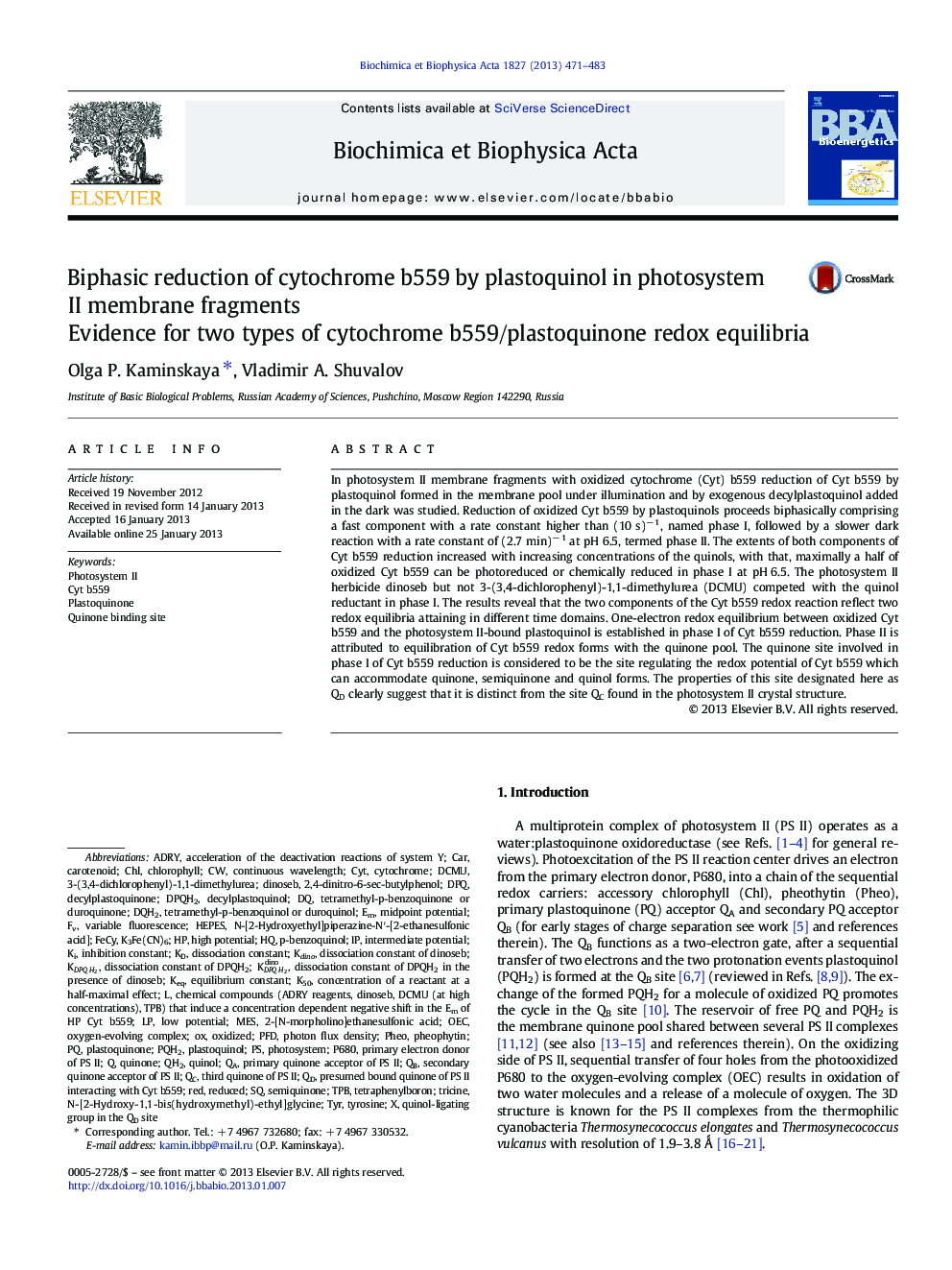| Article ID | Journal | Published Year | Pages | File Type |
|---|---|---|---|---|
| 1942295 | Biochimica et Biophysica Acta (BBA) - Bioenergetics | 2013 | 13 Pages |
In photosystem II membrane fragments with oxidized cytochrome (Cyt) b559 reduction of Cyt b559 by plastoquinol formed in the membrane pool under illumination and by exogenous decylplastoquinol added in the dark was studied. Reduction of oxidized Cyt b559 by plastoquinols proceeds biphasically comprising a fast component with a rate constant higher than (10 s)− 1, named phase I, followed by a slower dark reaction with a rate constant of (2.7 min)− 1 at pH 6.5, termed phase II. The extents of both components of Cyt b559 reduction increased with increasing concentrations of the quinols, with that, maximally a half of oxidized Cyt b559 can be photoreduced or chemically reduced in phase I at pH 6.5. The photosystem II herbicide dinoseb but not 3-(3,4-dichlorophenyl)-1,1-dimethylurea (DCMU) competed with the quinol reductant in phase I. The results reveal that the two components of the Cyt b559 redox reaction reflect two redox equilibria attaining in different time domains. One-electron redox equilibrium between oxidized Cyt b559 and the photosystem II-bound plastoquinol is established in phase I of Cyt b559 reduction. Phase II is attributed to equilibration of Cyt b559 redox forms with the quinone pool. The quinone site involved in phase I of Cyt b559 reduction is considered to be the site regulating the redox potential of Cyt b559 which can accommodate quinone, semiquinone and quinol forms. The properties of this site designated here as QD clearly suggest that it is distinct from the site QC found in the photosystem II crystal structure.
► Reduction of Cyt b559 of PS II membrane fragments by plastoquinol is biphasic. ► The data reveal in PS II a quinol binding site interacting with cytochrome b559. ► The quinone site of PS II regulates the redox potential of cytochrome b559.
